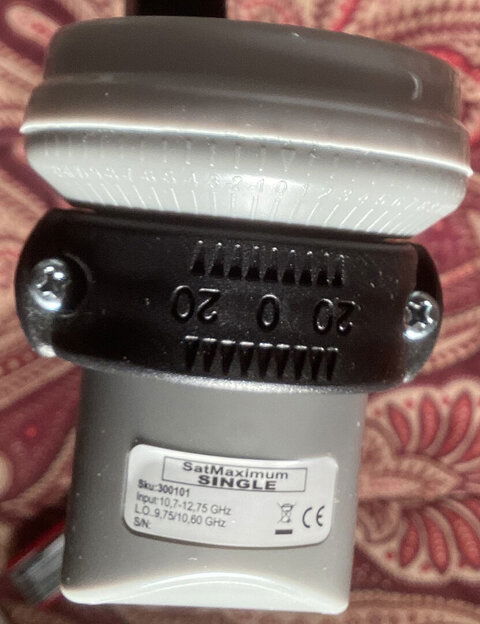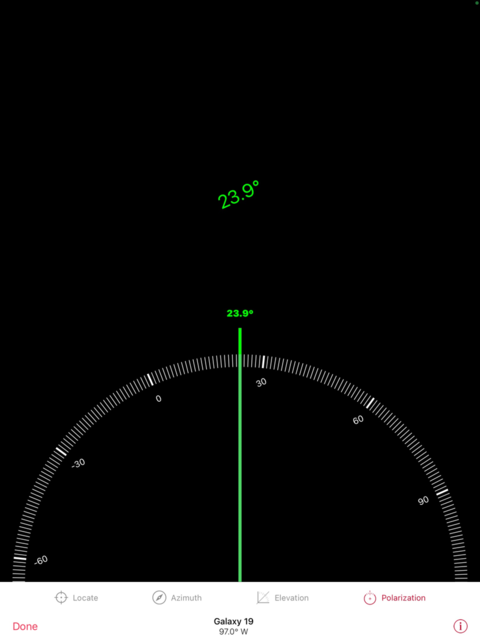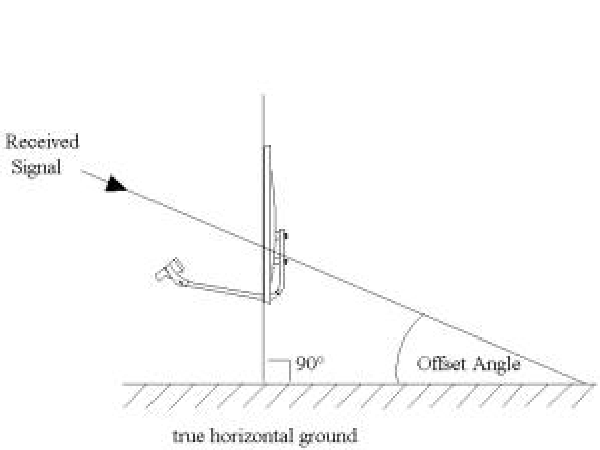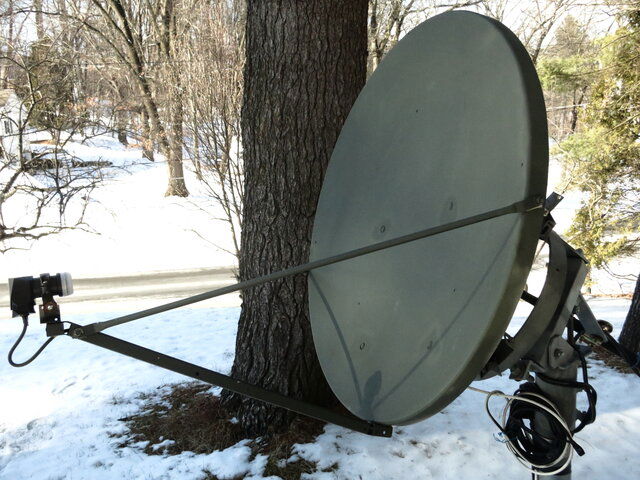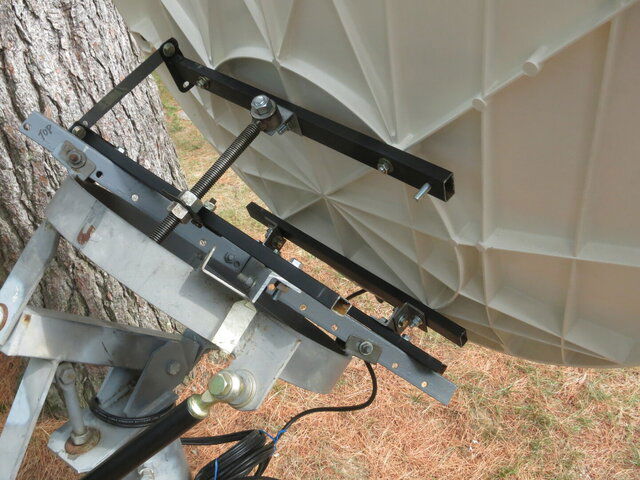QUESTION: Do you mean as set behind the dish and as measured on the antenna branch?
I mean that the angle I measure by placing my phone on the the arm (what they call the "antenna branch") - compared to horizontal - is quite different from the elevation of the satellite that the dish is receiving.
I have measured the following at my location:
Muzak dish aimed at 123W - the satellite is at 21 degrees elevation - the measurement on the LNB arm shows 13 degrees elevation
FortecStar 90cm aimed at 87W - the satellite is at 40 degrees, the measurement on the LNB arm shows 31 degrees
Globecast Channel Master 75E dish aimed at 34.5W - the satellite is at 28 degrees and the measurement on the elevation of the LNB arm shows 14 degrees
so what I conclude is that :
a- the LNB arm (or "antenna branch") is not in line with the elevation that the dish is aiming at
b- the difference varies from one dish to another
as far as measuring behind the dish, in most cases there's no place on most offset dish that will give you an accurate reading. The closest you'll find to an accurate reading is the marks on the dich mount - but like i said before, that can be off by a few degrees
So my recommendation here is to set that elevation using the marks on the mounts, have the receiver and a TV near the dish, tune to a known transponder for the satellite you are trying to find, set the skew of the LNB approximately to what it should be, and move the dish slowly in azimuth until you get a signal. If you don't get anything, lower the elevation by one degree and try the same again, then another degree. Then if after lowering by 5 dgrees you have not found it, move it up one degree at at time and try again, etc.
a note on dish pointing apps - they are pretty good for the elevation, and quite terrible for the azimuth, because the compass in a phone is quite innacurate and might react to metal in its proximity, so treat those apps as a rough indicator and not as a scientific tool
another note, on the finder that were discussed earlier in the thread. I have one and I love it. It's also not very accurate and won't tell you if you're pointing at a satellite or at your neighbor's tree, but it will change sound when it's receiving some energy - whether it's true satellite signals or thermal noise from a tree. So if there's no obstacle, it's a quick way of aiming the dish toward something potentially interesting. It also won't make a difference between an FTA satellite and a Directv satellite. So if it squeaks - indicating there's signal - but a blind scan finds nothing, that means it's probably aiming at DirecTV or DishNetwork. If the blind scan finds something, you look on Lyngsdat to try to figure out what satellite it is that you're receiving, and once you found one, it's usually fairly easy to hop on to the next one etc
Once you understand those limitations, it's a very useful tool for zeroing in on something



